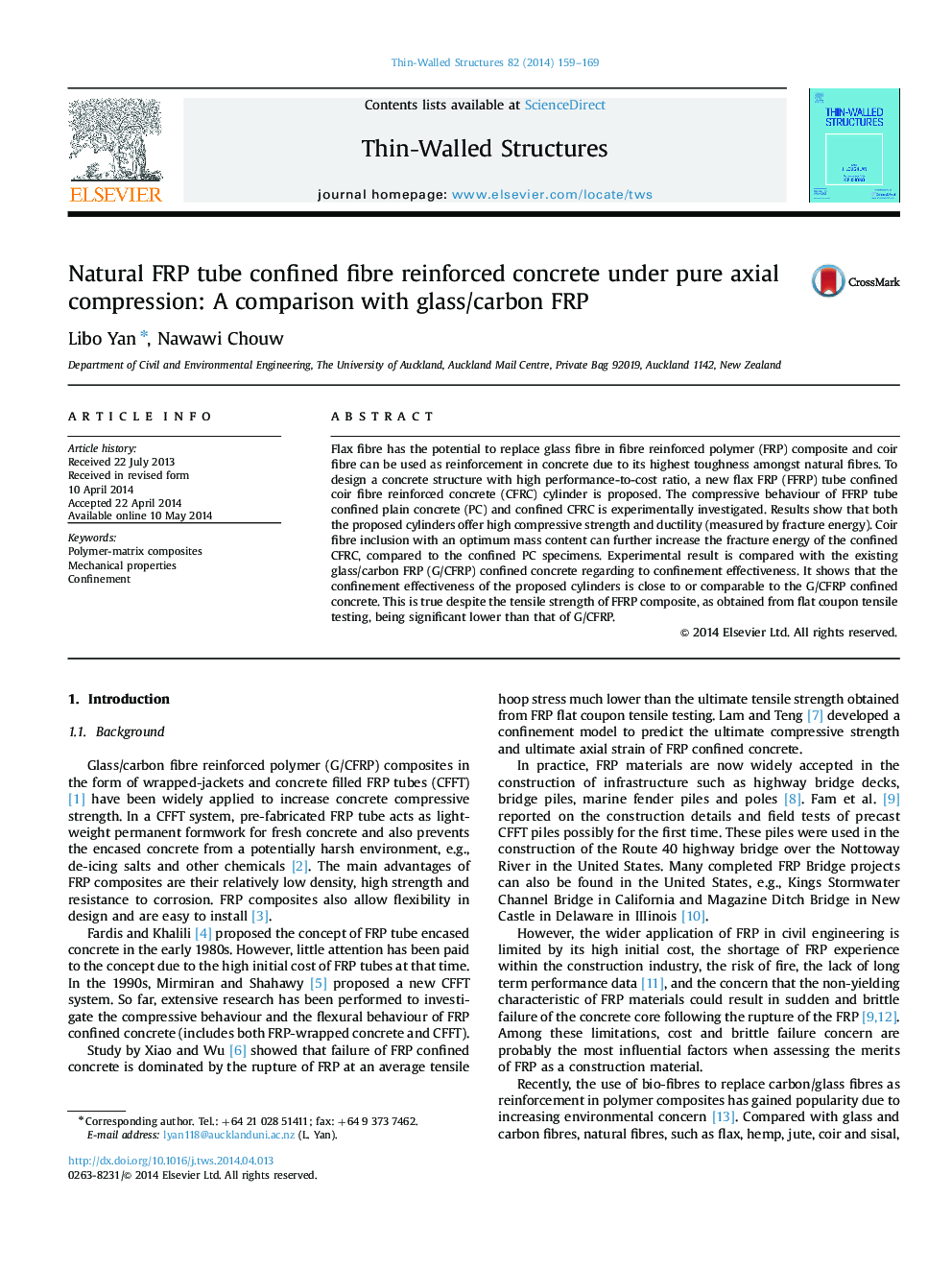| Article ID | Journal | Published Year | Pages | File Type |
|---|---|---|---|---|
| 308958 | Thin-Walled Structures | 2014 | 11 Pages |
•Natural FRP tube can be used as concrete confinement.•The confinement performance of natural FRP is comparable to glass/carbon.•Coir fibre in concrete modifies the failure to be ductile.
Flax fibre has the potential to replace glass fibre in fibre reinforced polymer (FRP) composite and coir fibre can be used as reinforcement in concrete due to its highest toughness amongst natural fibres. To design a concrete structure with high performance-to-cost ratio, a new flax FRP (FFRP) tube confined coir fibre reinforced concrete (CFRC) cylinder is proposed. The compressive behaviour of FFRP tube confined plain concrete (PC) and confined CFRC is experimentally investigated. Results show that both the proposed cylinders offer high compressive strength and ductility (measured by fracture energy). Coir fibre inclusion with an optimum mass content can further increase the fracture energy of the confined CFRC, compared to the confined PC specimens. Experimental result is compared with the existing glass/carbon FRP (G/CFRP) confined concrete regarding to confinement effectiveness. It shows that the confinement effectiveness of the proposed cylinders is close to or comparable to the G/CFRP confined concrete. This is true despite the tensile strength of FFRP composite, as obtained from flat coupon tensile testing, being significant lower than that of G/CFRP.
